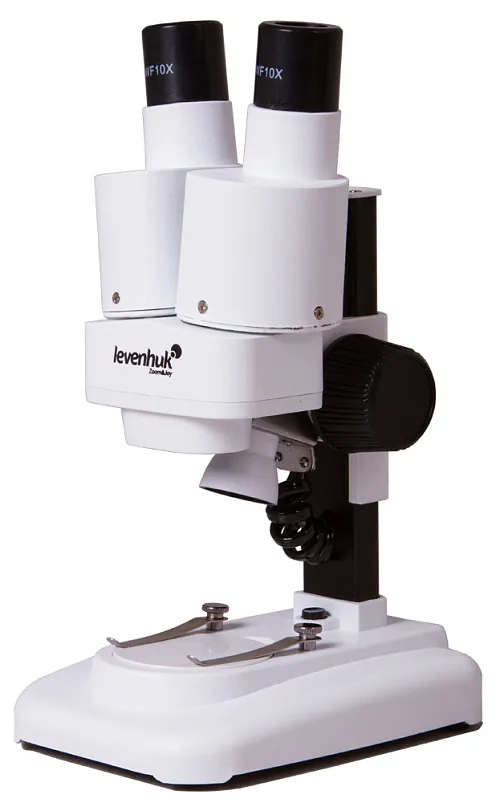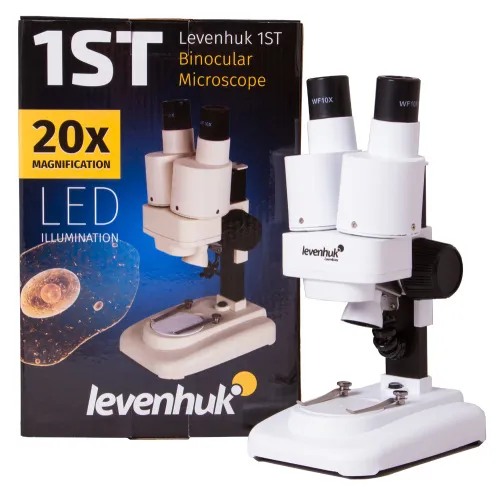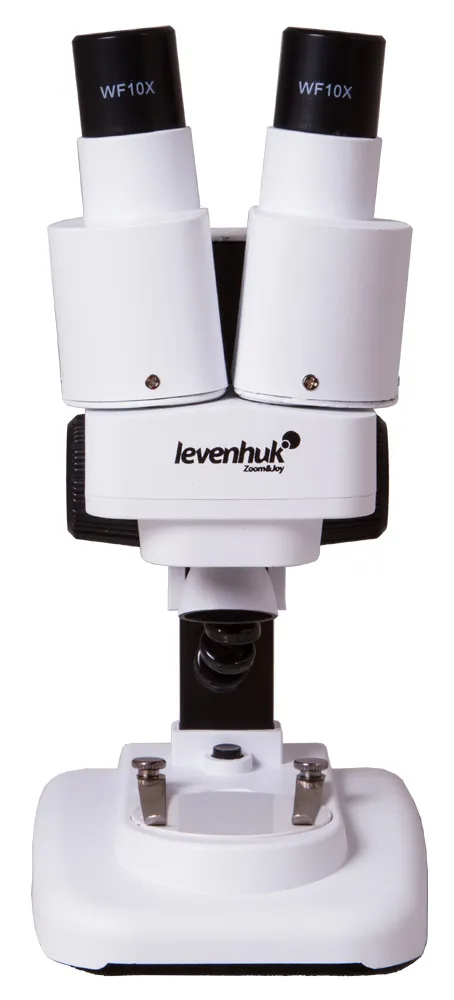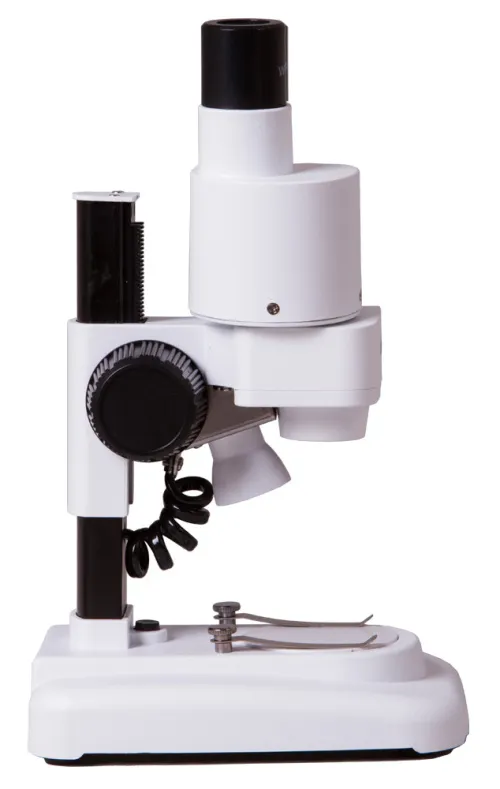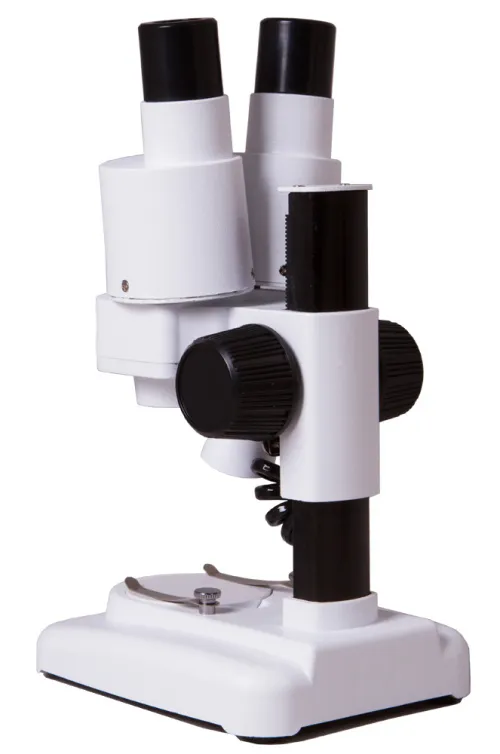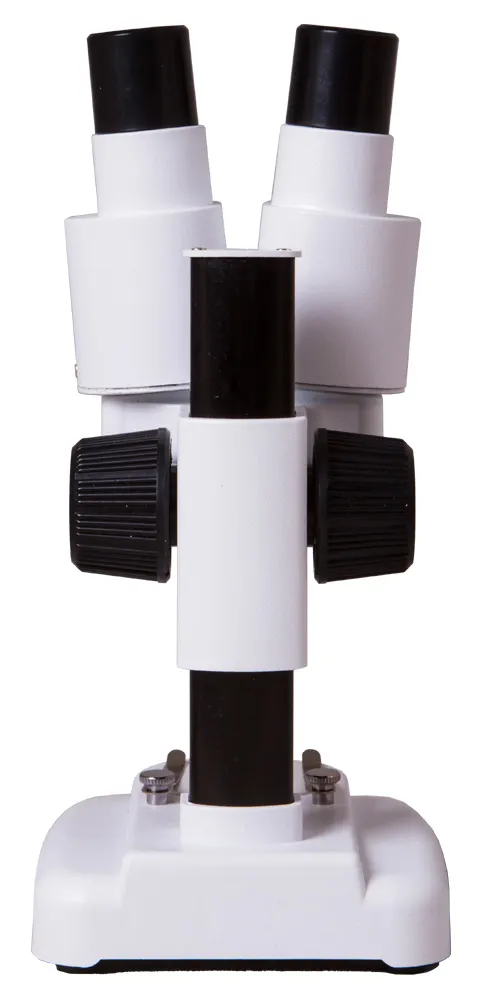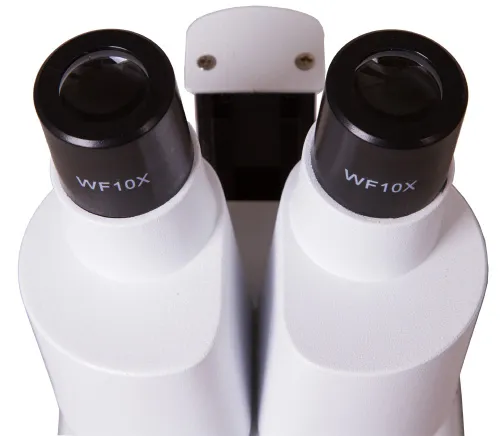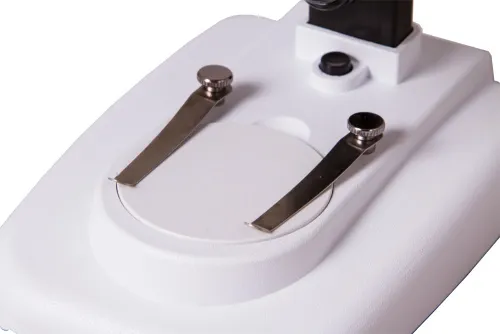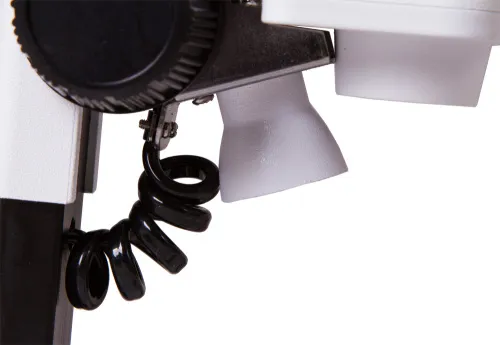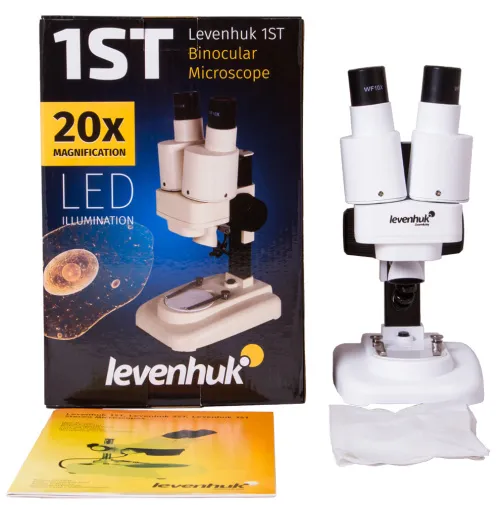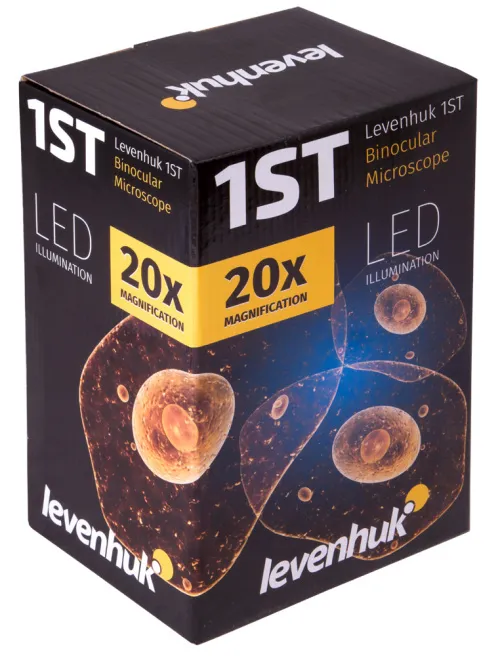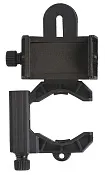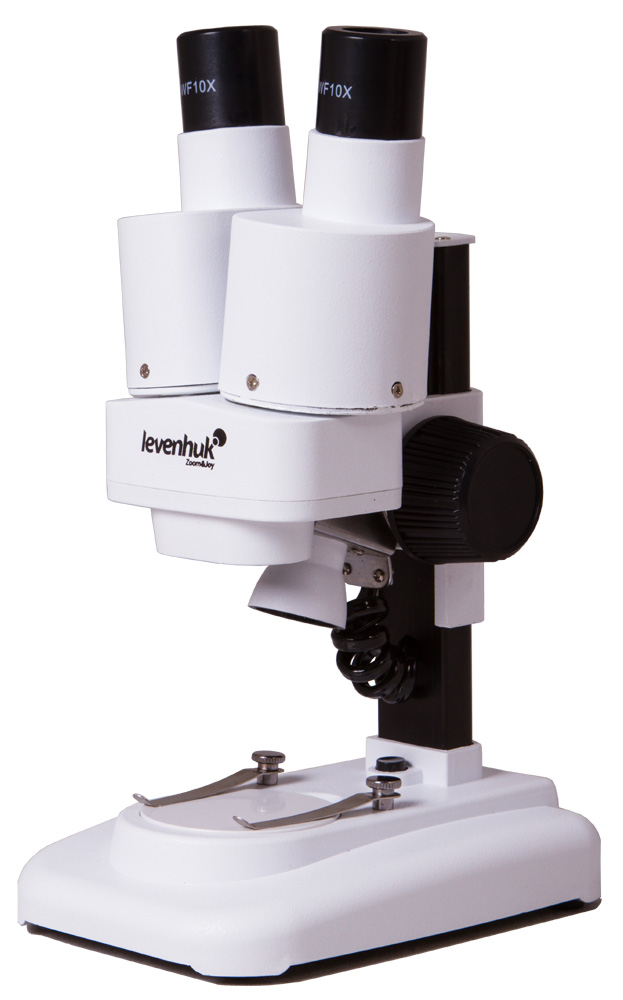Levenhuk 1ST Microscope
Magnification: 20x. Stereo microscope with 65mm working distance
| Product ID | 70404 |
| Brand | Levenhuk, Inc., USA |
| Warranty | lifetime |
| EAN | 5905555004563 |
| Package size (LxWxH) | 13x17x26 cm |
| Shipping Weight | 0.76 kg |
Levenhuk 1ST Microscope is an instrumental microscope that provides a three-dimensional image. Thanks to the large working distance of 65mm, it can be used to study large samples: coins, minerals, pieces of rock, precious stones, etc. The microscope will come in handy for all fans of nature, archaeologists, biologists, and collectors.
The microscope lenses are made of highly transparent optical glass for you to be able to view the small details of the specimens. The optics provide a fixed magnification of 20x, which is sufficient for detecting various defects on surfaces or examining biological samples. You can fix the studied specimens on the round stage (white plate) with metal clips.
To make precise sharpness adjustments, you can use coarse focusing. Powered by two AA batteries, the upper LED lights can be turned on for working at night in complete darkness (batteries are not included).
Features:
- Stereo microscope
- Large working distance
- Convenient binocular head
- Upper LED illuminator
- Battery-powered
- Storage case included
The kit includes:
- Levenhuk 1ST microscope
- Binocular head
- WF10x eyepiece – 2 pieces
- 2x objective lens
- Case
- White stage plate
- User manual and lifetime warranty
Levenhuk Levenhuk 1ST stereo microscope is compatible with Levenhuk digital cameras (purchased separately). Levenhuk digital cameras are installed in the eyepiece tube instead of the eyepiece.
| Product ID | 70404 |
| Brand | Levenhuk, Inc., USA |
| Warranty | lifetime |
| EAN | 5905555004563 |
| Package size (LxWxH) | 13x17x26 cm |
| Shipping Weight | 0.76 kg |
| Type | stereo/instrumental |
| Microscope head type | binocular |
| Optics material | optical glass |
| Head | fixed (non-rotatable) |
| Head inclination angle | not angled |
| Magnification, x | 20 |
| Eyepiece tube diameter, mm | 23.2 |
| Eyepieces | WF10x (2 pcs.) |
| Objectives | 2x |
| Working distance, mm | 65 |
| Interpupillary distance, mm | 55 — 75 |
| Stage, mm | Ø50 |
| Stage moving range, mm | fixed |
| Stage features | white plate, with clips |
| Focus | coarse: 35mm |
| Body | plastic |
| Illumination | LED |
| Power supply | 2 AA batteries (not included) |
| Power supply: batteries/built-in battery | yes |
| Light source type | 3V/0.06W LED |
| Operating temperature range, °C | -5...+40 |
| User level | beginners, elementary |
| Assembly and installation difficulty level | extremely simple |
| Application | elementary, for applied research |
| Illumination location | upper |
| Research method | bright field |
| Pouch/case/bag in set | dust cover |
We have gathered answers to the most frequently asked questions to help you sort things out
Find out why studying eyes under a microscope is entertaining; how insects’ and arachnids’ eyes differ and what the best way is to observe such an interesting specimen
Read this review to learn how to observe human hair, what different hair looks like under a microscope and what magnification is required for observations
Learn what a numerical aperture is and how to choose a suitable objective lens for your microscope here
An interesting review on how such microscopes work, form the 3D image and in what fields they are applied
Learn what a spider looks like under microscope, when the best time is to take photos of it, how to study it properly at magnification and more interesting facts about observing insects and arachnids
This review for beginner explorers of the micro world introduces you to the optical, illuminating and mechanical parts of a microscope and their functions
Short article about Paramecium caudatum - a microorganism that is interesting to observe through any microscope

